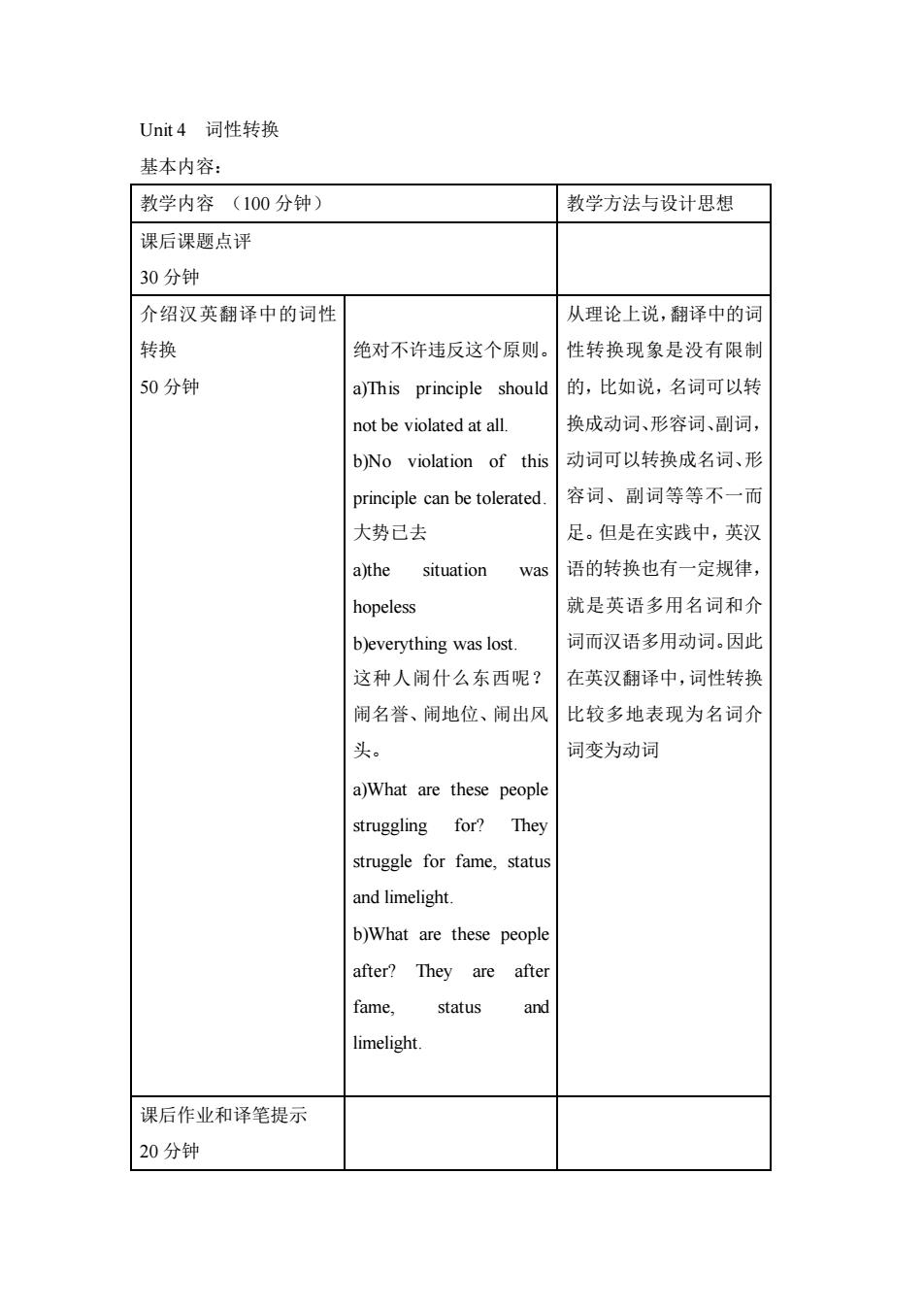
Unit4词性转换 基本内容: 教学内容(100分钟) 教学方法与设计思想 课后课题点评 30分钟 介绍汉英翻译中的词性 从理论上说,翻译中的词 转换 绝对不许违反这个原则, 性转换现象是没有限制 50分钟 a)This principle should的,比如说,名词可以转 not be violated at all. 换成动词、形容词、副词, b)No violation of this 动词可以转换成名词、形 principle can be tolerated. 容词、副词等等不一而 大势已去 足。但是在实践中,英汉 a)the situation was语的转换也有一定规律 hopeless 就是英语多用名词和介 b)everything was lost. 词而汉语多用动词,因此 这种人闹什么东西呢? 在英汉翻译中,词性转换 闹名誉、闹地位、闹出风比较多地表现为名词介 头。 词变为动词 a)What are these people struggling for?They struggle for fame,status and limelight. b)What are these people after?They are afte fame, status and limelight. 课后作业和译笔提示 20分钟
Unit 4 词性转换 基本内容: 教学内容 (100 分钟) 教学方法与设计思想 课后课题点评 30 分钟 介绍汉英翻译中的词性 转换 50 分钟 绝对不许违反这个原则。 a)This principle should not be violated at all. b)No violation of this principle can be tolerated. 大势已去 a)the situation was hopeless b)everything was lost. 这种人闹什么东西呢? 闹名誉、闹地位、闹出风 头。 a)What are these people struggling for? They struggle for fame, status and limelight. b)What are these people after? They are after fame, status and limelight. 从理论上说,翻译中的词 性转换现象是没有限制 的,比如说,名词可以转 换成动词、形容词、副词, 动词可以转换成名词、形 容词、副词等等不一而 足。但是在实践中,英汉 语的转换也有一定规律, 就是英语多用名词和介 词而汉语多用动词。因此 在英汉翻译中,词性转换 比较多地表现为名词介 词变为动词 课后作业和译笔提示 20 分钟